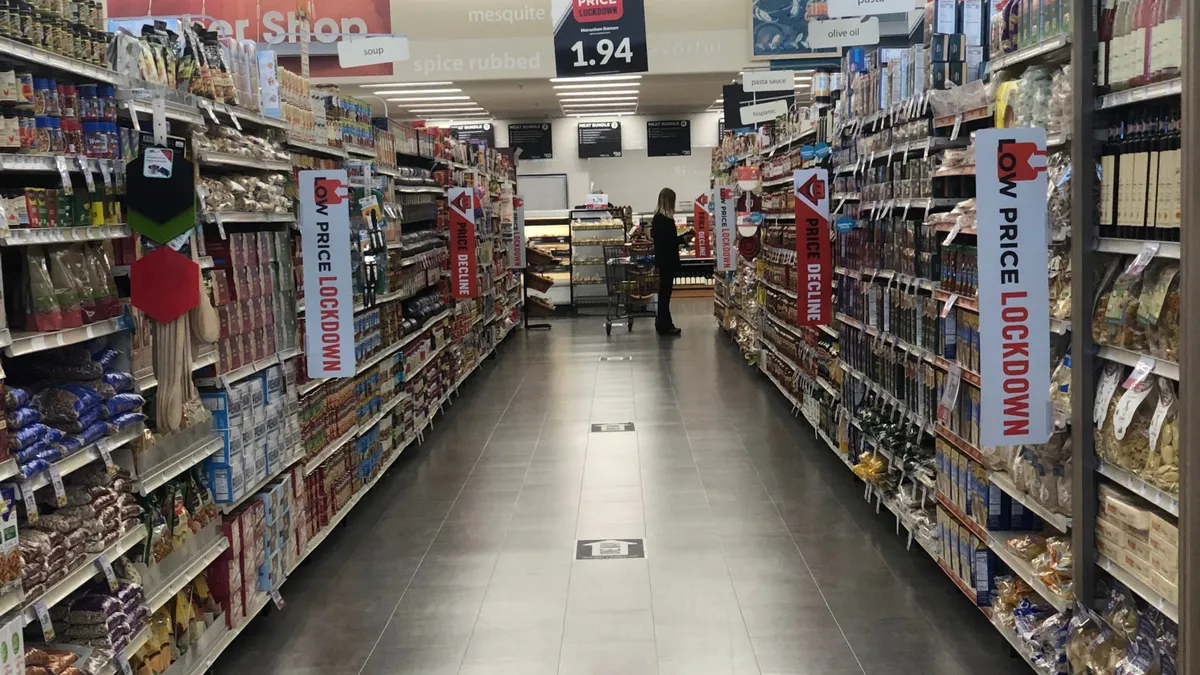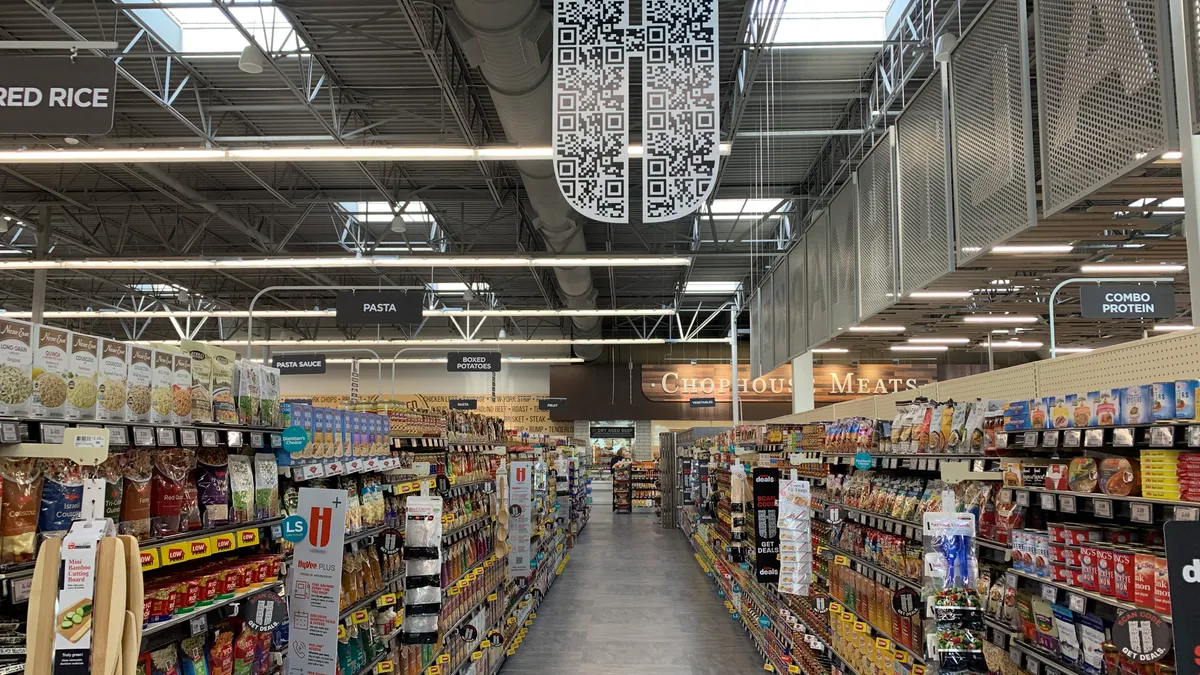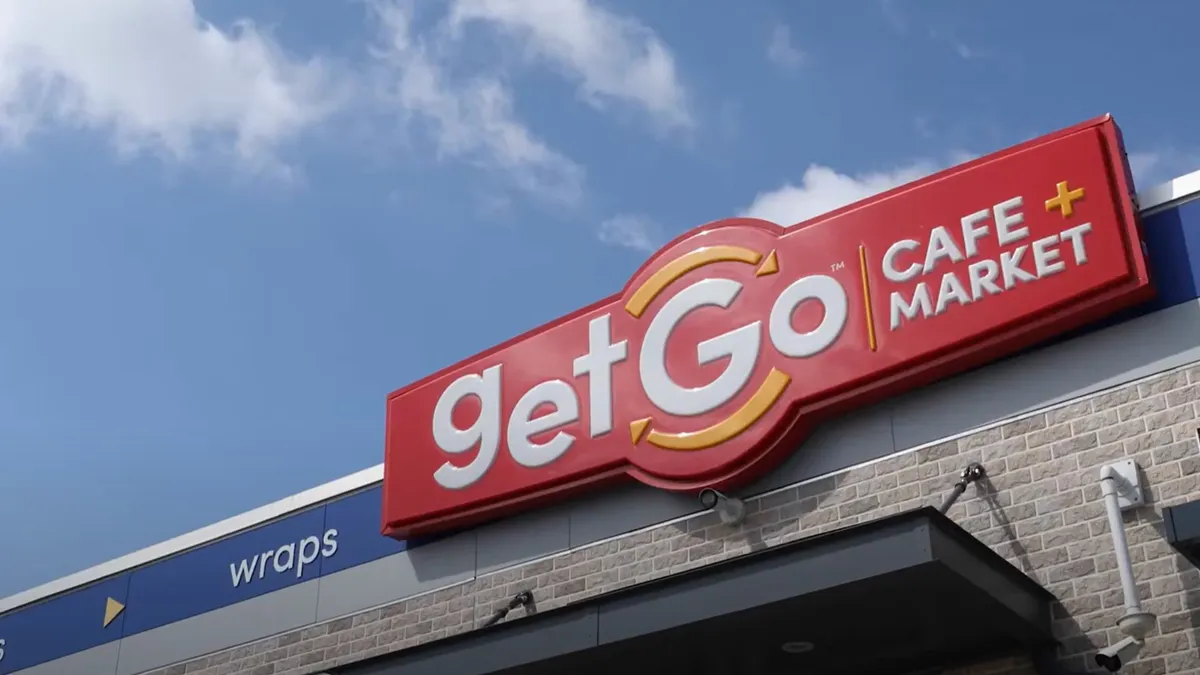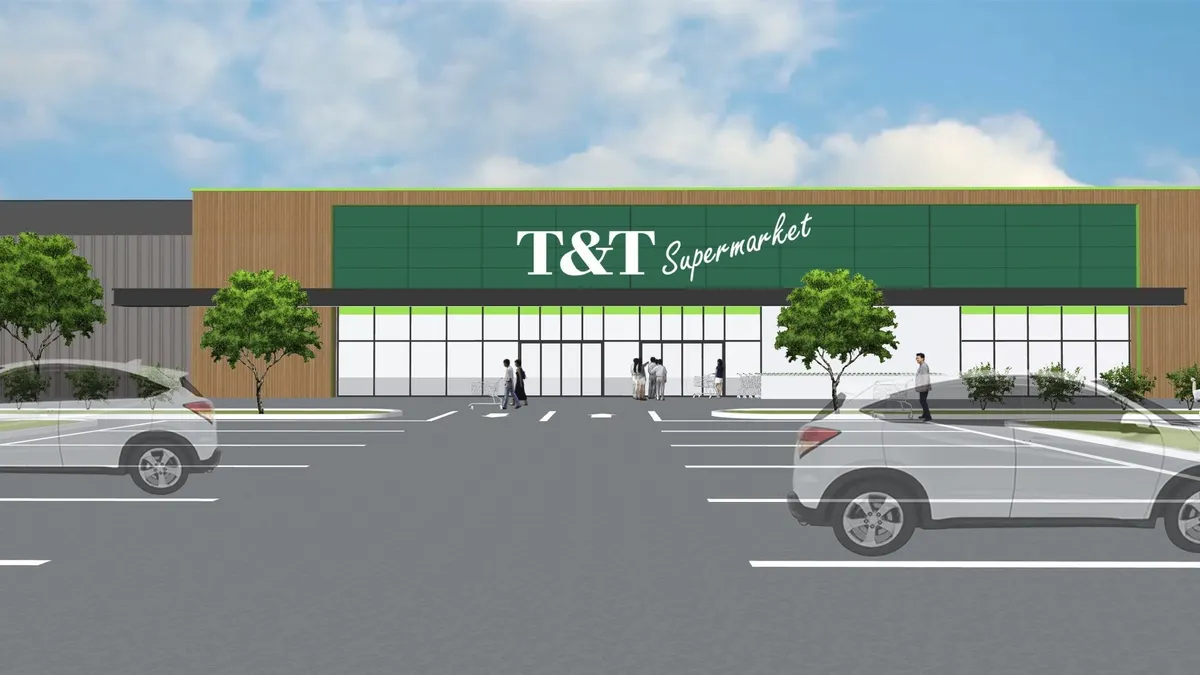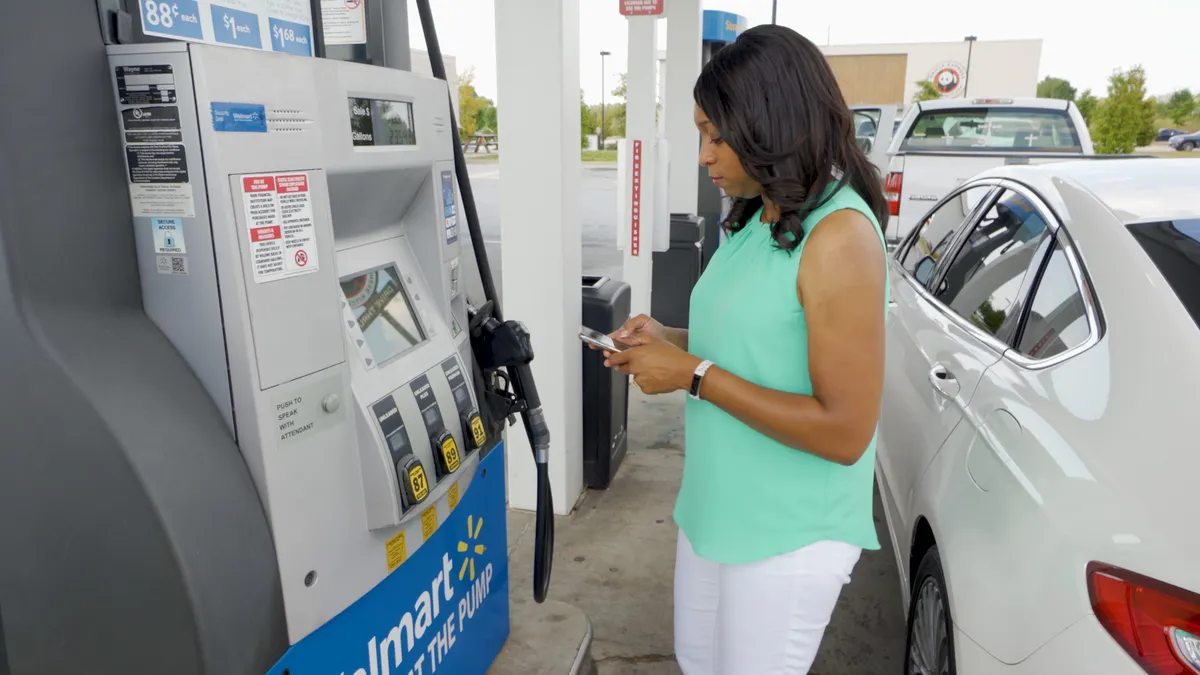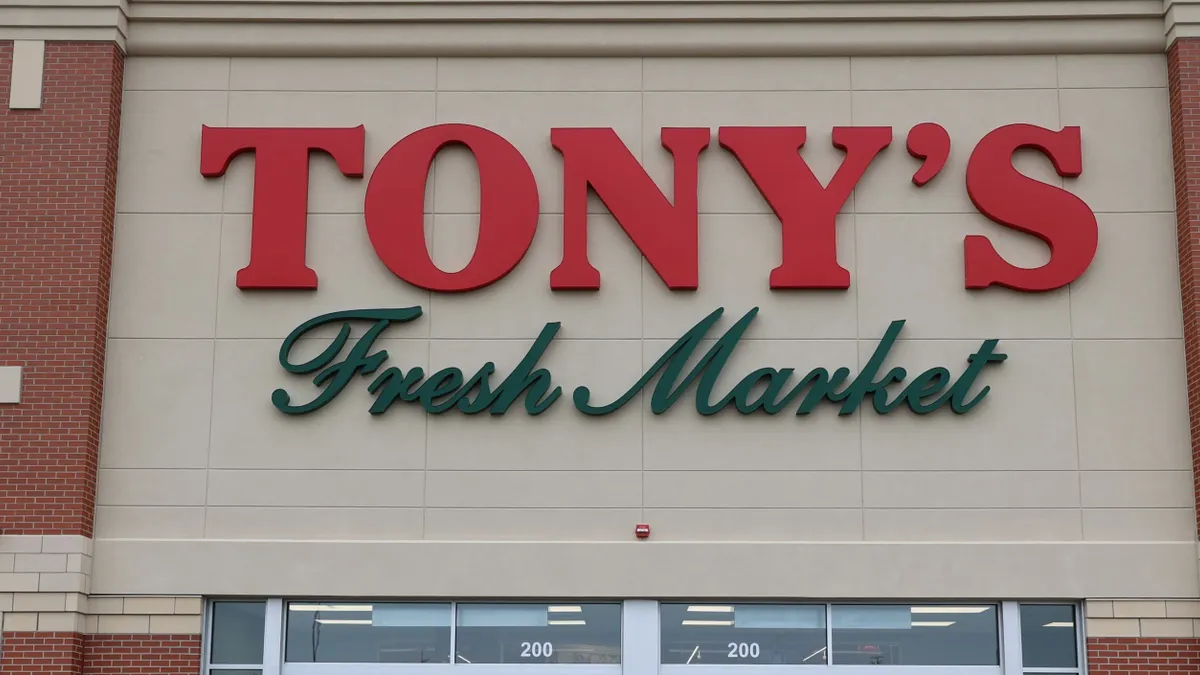They have waited patiently in line to get in, stared down empty shelves and even donned face masks. But telling consumers which way to walk through the supermarket might be asking too much.
"We're in a society where we're used to getting what we want when we want it," said Tom Wrobleski, a senior opinion writer for the Staten Island Advance who covers daily life in the New York City borough and recently chronicled his experience shopping for groceries for the newspaper. "I think there are some people who believe that in a situation like this if there’s some kind of inconveniencing thing coming at them, they’re going to say I don’t have to listen to this."
Getting customers to follow all of the new safety guidelines they've put in place over the past two months has been challenging for retailers. But shoppers seem to be flouting one-way aisle policies many supermarket operators have put in place with particular abandon. Social media sites are bubbling with posts from irate customers who complain that other shoppers routinely disobey directional signage and violate social distancing protocols as they shove carts around stores. Analysts interviewed by Grocery Dive also say they've seen shoppers and employees disregarding one-way aisle rules in their local stores.
Disheartening trip to grocery store. Many people not wearing masks, not obeying one-way aisles, hard to maintain six feet, people fondling merchandise. We are terrible at cooperation.
— Scott Nicholson (@eScottNicholson) April 26, 2020
Large chains like Walmart, Albertsons, Hy-Vee and Publix are among the grocers that have told shoppers they cannot reverse course when walking down aisles as a way to keep people from getting too close to each other. Stores are primarily relying on signage and their employees to direct customers once they enter.
Walmart Executive Vice President and Chief Operating Officer Dacona Smith said that some shoppers were creating dangerous conditions for employees by disregarding rules meant to slow the spread of the virus. "While many of our customers have been following the advice of the medical community regarding social distancing and safety, we have been concerned to still see some behaviors in our stores that put undue risk on our people," Smith said in an April 3 statement announcing a slate of new safety measures, including one-way aisles in some stores.
A Publix spokeswoman acknowledged that shoppers may not like having to move in a single direction down aisles, but she said the grocer has received positive feedback since implementing the measures. "While we have signage in our stores regarding one-way directional aisles, it may not resonate with every customer. Our store teams do a great job of reminding customers and sharing why we have made the adjustment to our aisles," Maria Brous, director of communications for the company, said in a statement provided to Grocery Dive.
Telling people not to walk freely while food shopping can be challenging for grocers because people are so accustomed to making their own choices in a supermarket, Neil Saunders, managing director of GlobalData Retail, said in an interview. Saunders has worked with food retailers including Whole Foods, Walmart, Target and Kroger in his career.
"Ever since self-service supermarkets were introduced, we've been freely wandering around the aisles, so it's almost an evolutionary type habit," said Saunders. "In this country, people don't like being told what to do ... it takes a lot of conscious thought not to behave in that way."
Another factor is that modern stores, particularly larger ones, have the concept of free movement baked into their design, Saunders added. "Having to walk down an aisle and go round to another one is time-consuming and frustrating," he said. "People sometimes forget something and they want to go back, or they may be browsing or comparing various items, so they want to go back and forth within an aisle."
Shoppers are chafing at rules that inhibit their free movement in stores because people are generally resistant to new routines, especially in settings where they have always done things a certain way, Jason Goldberg, chief commerce strategy officer at Publicis, an advertising firm, and a veteran retail analyst, told Grocery Dive.
"When you just drop in floor decals and say this is now a one-way aisle, there’s no hope that that will be effective unless the store has a [multifaceted] campaign around reinforcing that new behavior," said Goldberg. "Any time we change the customer experience in retail, customers don’t just immediately adopt the new experience. It has to be reinforced and messaged, and it takes a number of exposures to get customers to change."
Grocers also haven't done enough to model or explain how they want customers to behave, a problem that is being compounded because abiding by a one-way aisle mandate means it can take longer to shop, Goldberg said, noting that he has observed grocery store employees violating instructions to walk down aisles in a single direction along with shoppers who are also ignoring the rules.
"It’s totally debatable whether the one-way aisles increase or decrease exposure to the virus," he added. "If I force you to spend twice as long in the store by walking through twice as many aisles to get through your list, I’m actually increasing your exposure to other customers."
While supermarkets may be struggling to convince people to abide by one-way aisle policies, the traditionally conservative industry stands to benefit from having been pressed to roll out untested policies in a hurry because of the pandemic — even if they haven't all met with resounding success, Saunders said.
"For some of the grocers probably the dominant voices prior to this crisis were some of the operational guys who are very, very good at what they do but are very traditional and don't necessarily like change," he said. "I think this crisis will have brought more voices to the fore who are more about innovating and experimenting and changing things."



